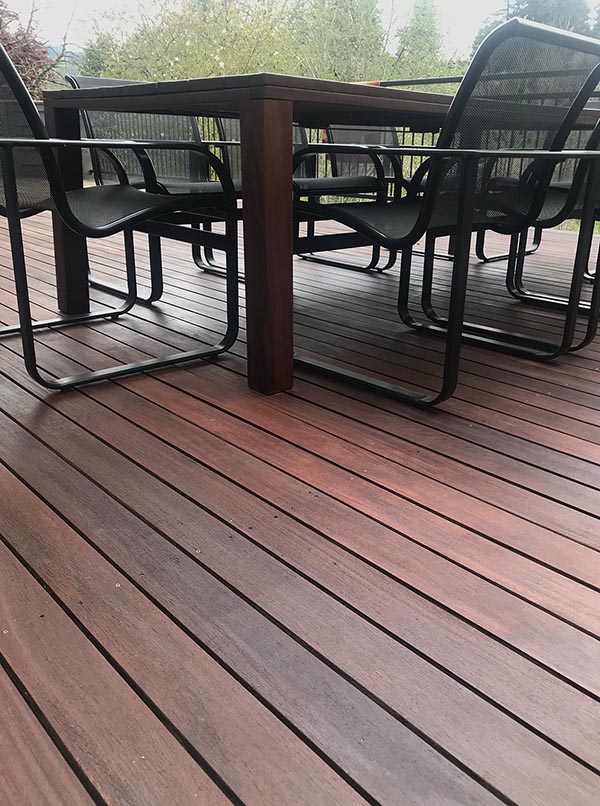Seal the Charm: Professional Fence Staining and Sealing Services
Wiki Article
Selecting the Right Discoloration for Your Fence: Tips and Considerations
When it comes to preserving and improving the appearance of your fence, selecting the right stain is important. We will discover the various types of fencing stains, variables to think about prior to picking a discolor, tips for preparing your fence for staining, and the distinctions between water-based and oil-based discolorations. Additionally, we will certainly dive into picking the right stain color to complement your fence and enhance your exterior area.Recognizing Different Sorts Of Fence Spots

On the other hand, water-based discolorations are made from acrylic or latex and use a more subtle color to the timber. Water-based stains are easier to clean up and have a faster drying out time contrasted to oil-based stains.
Choosing in between water-based and oil-based discolorations depends on numerous elements, including personal preference, the wanted appearance, and the level of upkeep called for. Oil-based discolorations are suggested for fence high-traffic areas or those regularly exposed to severe weather. fence staining. Water-based spots, on the other hand, are a prominent selection for fencings in residential locations where appearance and simplicity of usage are very important
Comprehending the distinctions between water-based and oil-based spots assists house owners make a notified choice when choosing the right tarnish for their fence. Considering the details needs of the fence, such as its location, direct exposure to sunshine, and desired visual, will certainly make sure that the chosen stain supplies resilient protection and enhances the general elegance of the fencing.
Aspects to Take Into Consideration Prior To Picking a Stain

Different kinds of wood absorb stains in a different way, resulting in varying levels of shade intensity and sturdiness. Additionally, specific woods may be more prone to problems like rot or insect problem, which may influence the selection of stain to shield and protect the fence.
The climate and climate condition in your area should also be taken into account. If you live in an area with rough winters months or high humidity, you might require a discolor that supplies added protection versus moisture and UV rays. Likewise, if your fencing is exposed to direct sunlight for long durations, a discolor with UV preventions can aid prevent fading and staining.
Last but not least, it is necessary to consider your desired aesthetic. Different stains supply different colors and finishes, permitting you to personalize the look of your fence (fence staining and sealing). Consider the general design and style of your residential or commercial property, as well as any kind of neighborhood regulations or house owner organization standards that may determine the appropriate discolor shades
Tips for Preparing Your Fence for Discoloration
Cleaning the fencing is an important action as it eliminates dust, crud, and any kind of previous finishings that may conflict with the staining process. Rub the surface area gently, paying added focus to areas with stubborn spots or mold.After cleansing, permit the fence to completely dry totally. fence staining. This action is vital as discoloring a moist or wet surface can result in poor bond and an uneven surface. Depending on the climate condition, it may take anywhere from a couple of hours to a couple of days for the fence to dry completely. Guarantee that the fence is entirely dry prior to waging the staining process.
Before discoloration, evaluate the fencing for any type of problems, such as loose boards or nails. This product aids to open up the wood pores, allowing the stain to permeate much more efficiently and evenly.

Comparing Oil-Based and Water-Based Stains
When choosing a discolor for your fencing, it is important to compare the qualities and advantages of oil-based and water-based stains. Both sorts of stains have their own advantages and considerations, so it is essential to understand the differences between them.Oil-based spots are understood for their durability and resistance to deterioration. They permeate deeply into the timber, providing excellent defense against the elements. They additionally boost the natural elegance of the timber by highlighting its grain and structure. Additionally, oil-based stains often tend to last longer than water-based discolorations, making them a preferred option for fences.
On the various other hand, water-based spots are much more eco pleasant and easier to tidy up. They have a reduced VOC (unstable organic substance) web content, which suggests they release less dangerous fumes into the air. Water-based stains likewise dry much faster, enabling a quicker application and less downtime. They might not give the very same level of protection as oil-based stains, especially in severe weather problems.
Inevitably, the option between oil-based and water-based spots depends upon your certain demands and choices. Take into consideration elements such as longevity, ecological effect, and ease of application when making your choice. Consulting with a professional or looking for suggestions from specialists can likewise assist make certain that you choose the appropriate tarnish for your fence.
Selecting the Right Stain Color for Your Fence
The option of an appropriate discolor shade for your fence is an important aspect of improving its aesthetic charm and enhancing the total layout of your outdoor space (fence staining companies). The appropriate stain color can change a level, ordinary fence right into a striking centerpiece that adds depth and character to your residential or commercial propertyWhen selecting a stain color for your fencing, it is crucial to think about the design and style of your home. If you have a conventional or classic design home, natural tones such as neutrals and browns can produce a cozy and welcoming appearance. On the other hand, if you have a modern or modern home, you may think about going with strong and dynamic colors that make a statement.
An additional aspect to consider is the all-natural environments of your residential or commercial property. If you have a lot of plant, a stain shade that enhances the natural landscape, such as greens or crimsons, can create a unified and cohesive look.
Furthermore, it deserves thinking about the upkeep required for various discolor colors. Lighter colors tend to Resources reveal dirt and put on even more quickly, while darker shades can hide blemishes and call for much less regular touch-ups.
Ultimately, the choice of discolor shade for your fencing should mirror your individual style and preferences - fence staining. Put in the time to check out various alternatives and consult with experts if needed, to ensure that you choose the perfect tarnish shade that boosts the elegance and charm of your fencing
Conclusion
Finally, when it comes to choosing the best tarnish for your fence, it is necessary to comprehend the different kinds of spots available and take into consideration aspects such as resilience and preferred look. Preparing the fencing correctly before discoloration is crucial for attaining optimal outcomes. In addition, comparing water-based and oil-based spots can assist establish the finest alternative for your particular demands. Picking the ideal discolor color can boost the total visual appeals of your fence.We will explore the different types of fencing spots, elements to think about prior to choosing a discolor, ideas for preparing your fence for staining, and the differences in between water-based and oil-based stains.Separating in between water-based and oil-based discolorations is critical when understanding different types of fencing discolorations. Water-based stains are less complicated to cleanse up and have a quicker drying time compared to oil-based discolorations. Furthermore, oil-based discolorations often tend to last longer than water-based discolorations, making them a preferred option for fences.
In verdict, when it comes to selecting the right discolor for your fencing, it is crucial to understand the different types of discolorations readily available and consider aspects such as durability and desired look.
Report this wiki page